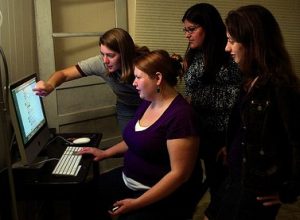
Recent studies revealed some interesting facts about the ways in which women use social media. The “2009 Women and Social Media Study” by BlogHer, iVillage and Compass Partners shows that women make up the majority of participants on many social networking sites, and they were more likely to turn to blogs than social networking sites for information. In addition, women reported spending less time utilizing newspapers, magazines, radio and TV in order to spend more time on social media sites.
The prevalence of women in the social media world is in contrast to their relative scarcity in the world of traditional media. For example, a smaller percentage of women than men read newspapers, despite continual efforts by the newspaper industry to attract the female audience. (See “Newspapers Execs Clueless about What Women Want” for more information and insight.)
The report surveyed nearly 4,000 women ages 18-77. It broke respondents down into two groups, those who did not engage in social media at least weekly (47 percent) and those who did (53 percent). Assuming that there are 79 million women in America who use the Internet, this means that there are about 42 million American women using social media at least once a week. Usage was broken down by type: status updates (e.g., Twitter), 16 percent; message boards or forums, 40 percent; and blogs, 55 percent. The big winners were social networking sites like MySpace and Facebook, which claimed 75% of all weekly social media users in the survey, equating to 31.5 million Americans.
Also, an analysis of usage at several popular social media sites by the proprietors of Information is Beautiful using Google Ad Planner shows that women make up the majority of users at most sites (including Facebook, Twitter, Flickr and MySpace), represent half the users at some (such as YouTube and LinkedIn), and are in the minority only at one: Digg.
What does all this mean? First, there is something drawing women to social media that is not drawing, and has never drawn them to traditional media. Without engaging in pop psychology or resorting to stereotypes, it could be that because social media emerged in the 21st century, they were never subject to a male-dominated way of thinking like radio, TV or print, which all emerged when women were far less influential outside of the home. It could also mean that women prefer the non-linear give-and-take of social media, while men prefer the traditional “push” method of information dissemination found in traditional media.

Whatever the reasons, it’s always important to know your audience. Understanding that most social media sites have a majority female audience and that women rely heavily upon blogs for their information will help guide businesses’ marketing decisions and control the flow of time, effort and money in the social media advertising space.
